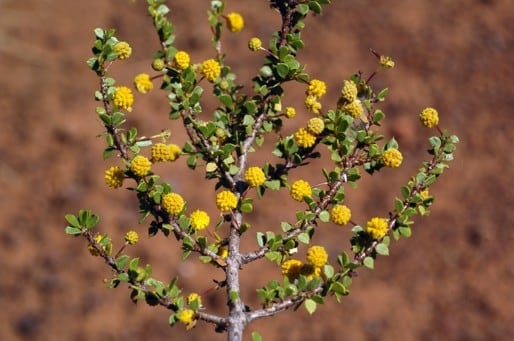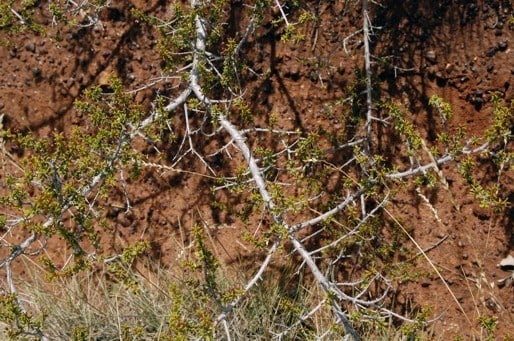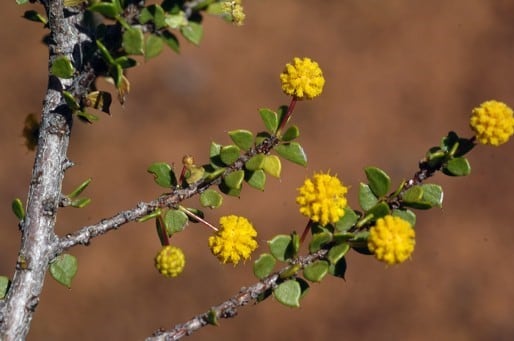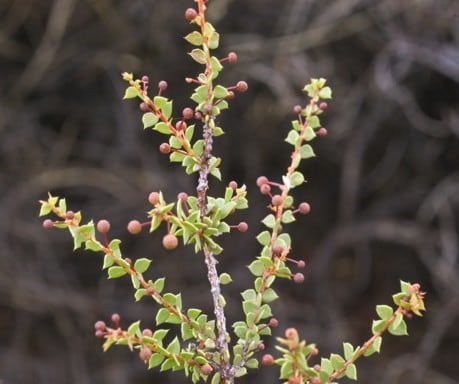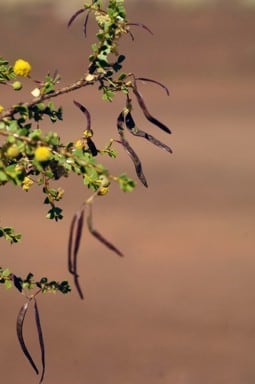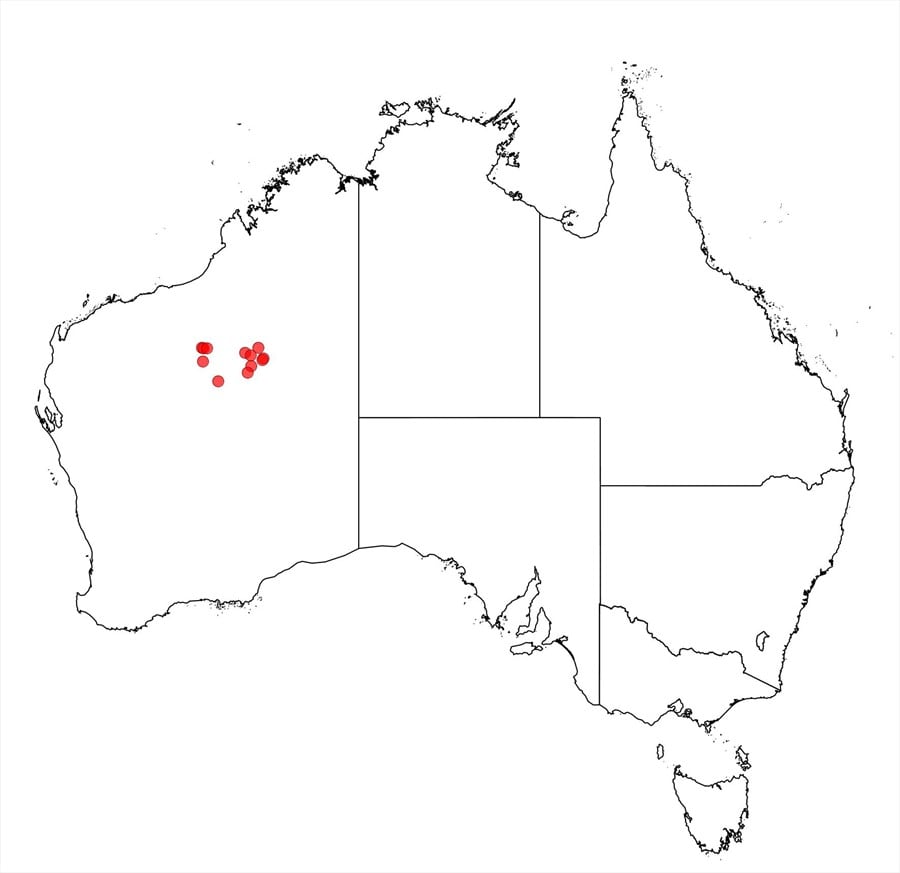Acacia minutissima Maslin
WATTLE
Acacias of Australia
Family
Fabaceae
Distribution
Occurs in W.A. in a series of discontinuous populations between Balfour Downs Stn in the eastern extremity of the Pilbara region, E to vicinity of Lake Disappointment in the Little Sandy Desert.
Description
Diffuse, intricately and openly branched, low-spreading shrub 0.3–1 (–1.5) m high, sometimes semi-prostrate, oldest plants somewhat craggy by persistent, short lateral branches which are denuded of phyllodes. Branchlets lenticellular, glabrous, resinous. Stipules persistent, 0.5–1 mm long, erect, often enveloped in resin. Phyllodes asymmetrically elliptic to obtriangular, broadest at or above middle, lower margin ±shallowly convex or straight, the upper margin markedly convex and sometimes angled at the gland, 3–6 (–7) mm long, 2–3 mm wide, l:w = 1–1.6, short-acuminate and terminated by a distinct cusp 0.5–1 mm long, glabrous; midrib ±central, sometimes with an indistinct second nerve; gland single, at or above centre of upper margin. Inflorescences simple, 1 per axil; peduncles 6–8 mm long, red (fresh), glabrous, base ebracteate; heads globular, densely 40–50-flowered, golden. Flowers 5-merous; sepals free, linear-spathulate. Pods linear to narrowly oblong, flat but shallowly rounded over seeds, 10–40 mm long, 3–4 mm wide, firmly chartaceous, glabrous. Seeds not seen but funicle probably exarillate.
Phenology
Flowers July/Aug.–Sept.
Habitat
Grows in sand or loam, on plains or in swales between dunes, commonly with Spinifex (Triodia sp.).
Specimens
W.A.: between Windy Corner and Well 24, Little Sandy Desert, Canning Stock Route, J.S.Beard 4923 (PERTH); Balfour Downs Stn, c. 40 km E along Talawana Track, B.R.Maslin 8540 (K, PERTH); Little Sandy Desert, A.S.Mitchell 1017 (NT n.v., PERTH); Keartland District, 65 km E of Calvert Range, G.J.Morse 208 (PERTH).
Notes
Acacia minutissima was noted as the second variant under A. maitlandii by B.R.Maslin in Fl. Australia 11A: 388 (2001) where it was erroneously recorded as occurring in the Gibson Desert. It is closest to, and superficially resembles, A. subtiliformis which is most readily distinguished by its tall, spindly, erect growth form, non-divaricately divided branchlets and differently shaped phyllodes with upper margins less prominently convex and apices less acuminate with a shorter cusp. These two species are related to A. maitlandii which has much longer phyllodes.
FOA Reference
Flora of Australia Project
Author
B.R.Maslin, J.Reid
This identification key and fact sheets are available as a mobile application:
URL: https://apps.lucidcentral.org/wattle/
© Copyright 2018. All rights reserved.
